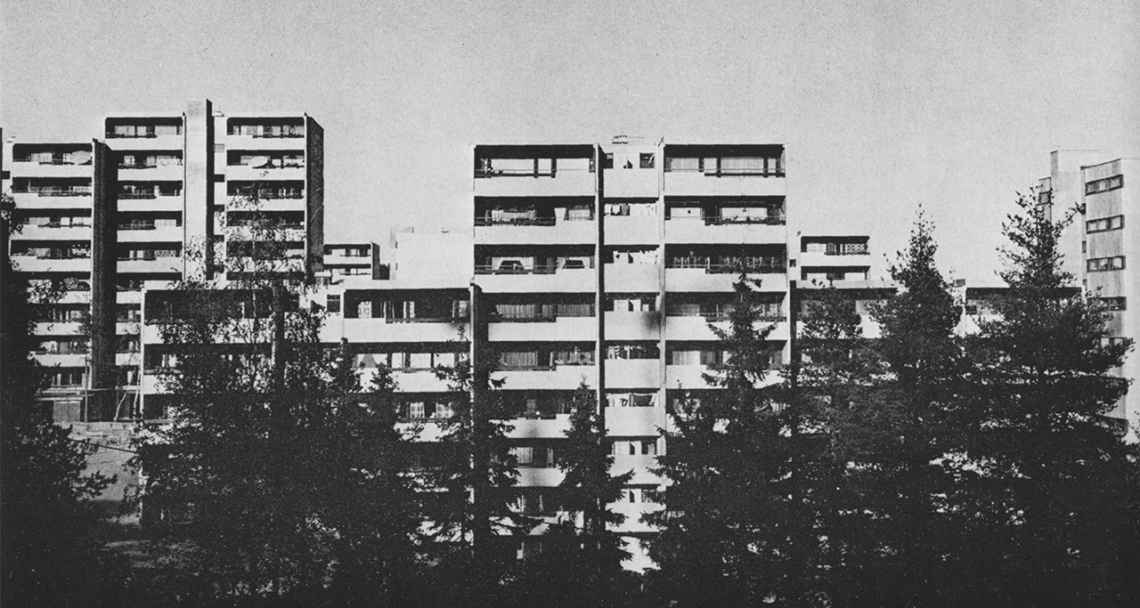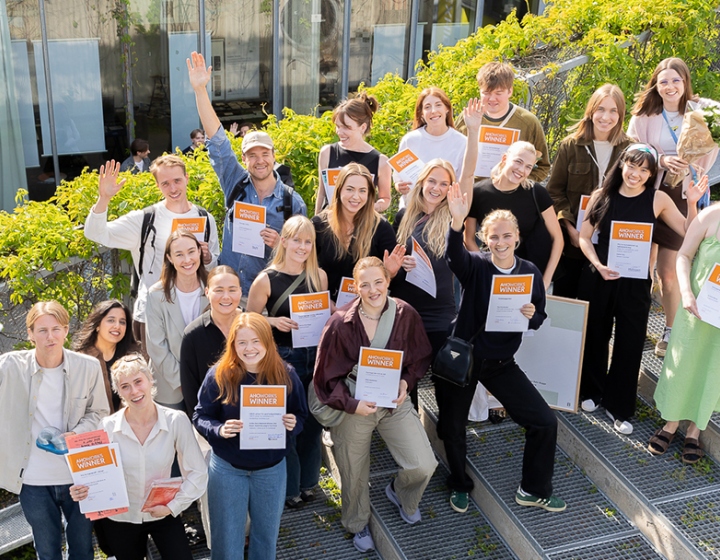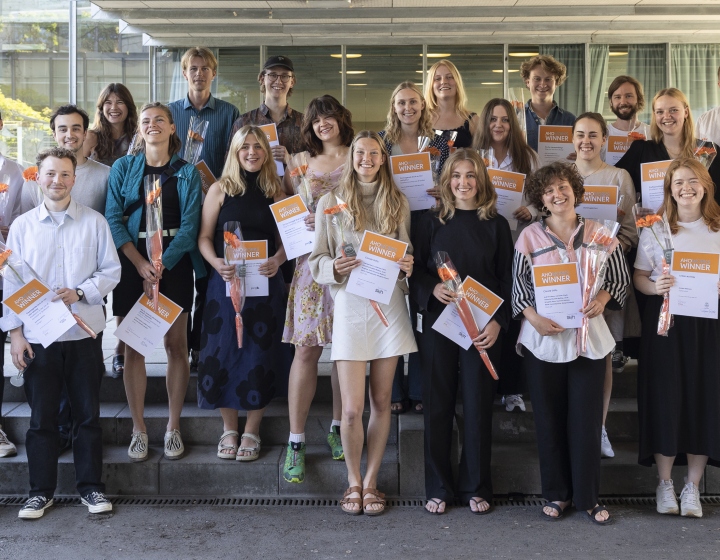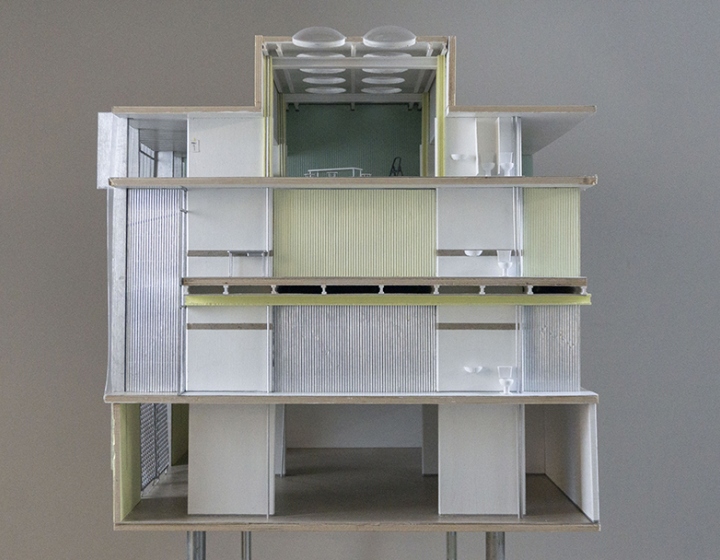Understanding the satellite town
02. September, 2021
Guttorm Ruud defended his PhD thesis ‘Sites of crisis. Histories of the satellite town’ at AHO on 3 February 2021.
Guttorm Ruud is an architect and a researcher. He has a master´s degree in architecture from AHO, an Executive Master in urbanism and has worked several years as a practising architect. He has experience from the National Board of the Norwegian Housing and City Planning Association (BOBY) and is a coordinator for The Scandinavian Research Network for Welfare and Architecture.
 Intending to pursue a PhD, Ruud got an Executive Master in urbanism with a focus on urban development and architectural preservation. For a long time he has had a theoretical interest in how architecture and planning function in society and during his studies he became interested in architectural discourse: how architects and others talk about buildings and places. After completing the Master program, Ruud got a PhD position with a focus on the historical and theoretical in post-war architecture, landscapes and structures. Ruud developed his thesis based on his background as an architect and his academic interest in architecture understood as a result of changing political, economic and social conditions. During his PhD he held an elective course for master students at AHO on the relationship between architecture and the welfare state during the post-war period. The elective course examined the satellite town from a historical perspective to understand the past and present correlations between architecture, politics, and society.
Intending to pursue a PhD, Ruud got an Executive Master in urbanism with a focus on urban development and architectural preservation. For a long time he has had a theoretical interest in how architecture and planning function in society and during his studies he became interested in architectural discourse: how architects and others talk about buildings and places. After completing the Master program, Ruud got a PhD position with a focus on the historical and theoretical in post-war architecture, landscapes and structures. Ruud developed his thesis based on his background as an architect and his academic interest in architecture understood as a result of changing political, economic and social conditions. During his PhD he held an elective course for master students at AHO on the relationship between architecture and the welfare state during the post-war period. The elective course examined the satellite town from a historical perspective to understand the past and present correlations between architecture, politics, and society.The PhD thesis examines the historical relationship between the welfare state and the satellite towns in Oslo. As in many other cities, Oslo has for a long time practised so-called area-based policies, where specific places with certain “satellite town challenges” are identified. These challenges are often related to the stigma already connected to these places.
Ruud questions this concept of satellite town challenges by examining history. The thesis examines the crisis and development of satellite towns by analysing the critique of the Norwegian welfare state and satellite towns in mass media between 1969 and 1975. The satellite towns became, through different reports and media, the victims of a stigmatization that still lingers in society today. Ruud wishes to challenge such “truths of the present”, which seem natural and obvious, by studying the history of the satellite town in light of its conflicts, struggles and coincidences. Thus, he wants to contribute with new knowledge to understand and discuss the satellite town.
A materialization of the welfare state
The thesis is based on the claim that the understanding of the welfare state is central to the understanding of the satellite town. While previous studies in architectural history often explain the welfare state as a coherent unit, Ruud explains the welfare state as a compromise between three parties: capital, state and civil society. Such a compromise involve contrasting interests, which tend to cause internal conflict and crisis. By examining these crises more closely it became obvious that the history of the satellite town is multifaceted, consisting of different crises and conflicts.
The satellite town as a problem
‘In Stovner, one of Oslo`s newest city districts, there are many children – up to 11-12 years old – who do not know the name of their thumb, the days of the week or the seasons of the year. They are ignorant of when they are born, and they have a poor concept of where they live. A number of children seem to have lost the ability to learn to read, write and do maths, and they will probably become almost illiterate. Their problems often seem inaccessible and impervious to known treatment methods.’
The Stovner report, 1975 (translation: Guttorm Ruud)
The satellite towns have been criticized for having poor living environments that are breeding grounds for social problems. According to Ruud, this stigma stemmed from the criticism that appeared in Norwegian reports and media discourse between 1969 and 1976, which linked social problems directly to the satellite towns as geographical areas.
He describes that the Stovner report from 1975 appeared to claim that the welfare state and the satellite town environment contributed to inferior conditions for the children living there. The media coverage of the Stovner report created a persistent stigmatization of the place as anti-human, characterized by social distress and conflicts. The original goal of the Stovner report was never to create a stigma, Ruud explains, but to address specific problems and solve them. Instead, the report came to be used as a basis for claiming that something was wrong with the children who lived there.
"Good intentions and failed executions, social ambition that has evolved into social predicament, progress reverting into regression, collectivism mutating into alienation and universalism being recast as repression: these are but some of the histories that form the background for the present understanding of the satellite town challenges", according to Ruud.

The Stovner report from 1975 was a special issue of the magazine Sinnets helse with the title Barn i Krise
A common understanding
The thesis states that the challenges in the satellite towns today are a result of cultural, social, and economic conditions that reflect general societal problems, rather than a result of the buildings, the geographical location and the place itself. According to Ruud, today's discourse around the satellite town has taken the focus away from the actual conflicts, namely general problems as a result of inequality, regardless of location. Ruud argues that such a unified image of the place helps to hide real complexities and contradictions, and that this can only be disputed if we redefine how we understand and talk about the satellite town.
Going forward, Ruud hopes that the dissertation can be an input in the debate by challenging today's discourse around the satellite town. The desire to create a common understanding of the welfare and architecture and satellite town has fuelled the initiative of The Scandinavian Research Network for Architecture and Welfare (architectureandwelfare.net), a network of researchers from Norway, Denmark and Sweden. The network has arranged several seminars on the relationship between architecture and the welfare state in the Scandinavian countries, with the aim of creating a common discourse.
The thesis «Sites of crisis: Histories of the satellite town» is available here.



